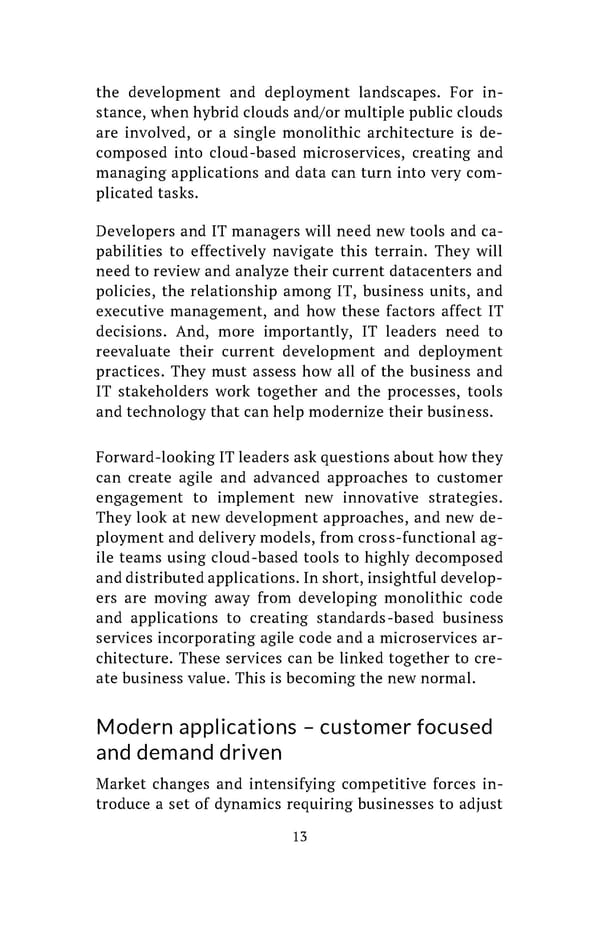the development and deployment landscapes. For in- stance, when hybrid clouds and/or multiple public clouds are involved, or a single monolithic architecture is de- composed into cloud-based microservices, creating and managing applications and data can turn into very com- plicated tasks. Developers and IT managers will need new tools and ca- pabilities to effectively navigate this terrain. They will need to review and analyze their current datacenters and policies, the relationship among IT, business units, and executive management, and how these factors affect IT decisions. And, more importantly, IT leaders need to reevaluate their current development and deployment practices. They must assess how all of the business and IT stakeholders work together and the processes, tools and technology that can help modernize their business. Forward-looking IT leaders ask questions about how they can create agile and advanced approaches to customer engagement to implement new innovative strategies. They look at new development approaches, and new de- ployment and delivery models, from cross-functional ag- ile teams using cloud-based tools to highly decomposed and distributed applications. In short, insightful develop- ers are moving away from developing monolithic code and applications to creating standards-based business services incorporating agile code and a microservices ar- chitecture. These services can be linked together to cre- ate business value. This is becoming the new normal. Modern applications – customer focused and demand driven Market changes and intensifying competitive forces in- troduce a set of dynamics requiring businesses to adjust 13
 Building Cloud Native Apps Painlessly Page 15 Page 17
Building Cloud Native Apps Painlessly Page 15 Page 17